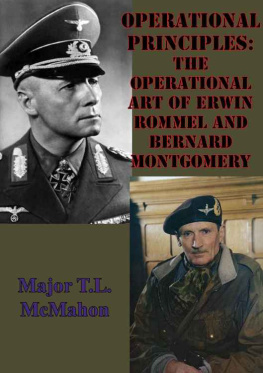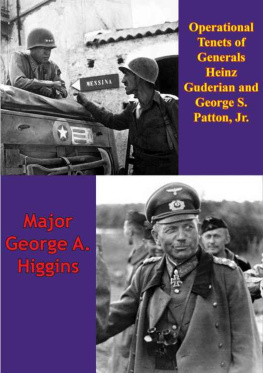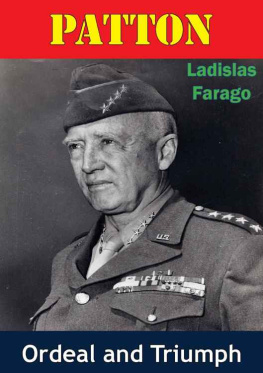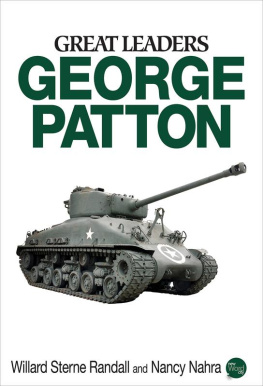
This edition is published by PICKLE PARTNERS PUBLISHINGwww.picklepartnerspublishing.com
To join our mailing list for new titles or for issues with our books picklepublishing@gmail.com
Or on Facebook
Text originally published in 1998 under the same title.
Pickle Partners Publishing 2015, all rights reserved. No part of this publication may be reproduced, stored in a retrieval system or transmitted by any means, electrical, mechanical or otherwise without the written permission of the copyright holder.
Publishers Note
Although in most cases we have retained the Authors original spelling and grammar to authentically reproduce the work of the Author and the original intent of such material, some additional notes and clarifications have been added for the modern readers benefit.
We have also made every effort to include all maps and illustrations of the original edition the limitations of formatting do not allow of including larger maps, we will upload as many of these maps as possible.
PATTON, THIRD ARMY AND OPERATIONAL MANEUVER
BY
Major Jack D. Flowers
Infantry
TABLE OF CONTENTS
Contents
TABLE OF CONTENTS
ABSTRACT
On 16 December 1944, the German Army launched an offensive in the Ardennes to split Allied forces and retake the ports of Antwerp and Liege. The German advance split the XII Army forces and left the 101st Airborne Division surrounded at Bastogne. To relieve the encircled units in the Ardennes and defeat the German offensive, Third Army conducted an impressive counterattack into the flank of the Germans. The flexibility to turn ninety degrees during the worst winter in thirty-eight years and relieve the encircled forces stands out as one of the greatest operational maneuvers in history. While this operation is unique, the actions of the commander and staff that planned and executed it deserve closer analysis to determine what enabled them to orchestrate this maneuver. It is especially remarkable, when taken in context, how rapidly the Army changed during the previous four years.
The US Army anticipating eventual war in Europe began a transformation which included drastic changes in force structure and doctrine. The primary transformation in doctrine was the revision of Field Service Regulation 100-5. The 1941 edition of 100-5 superseded a tentative version published in 1939 which was the first major revision of warfighting doctrine since 1923. It was with this manual that the Army went to war. It was also the manual used to train and teach new and reserve officers who had little experience in the study and practice of war. How important and to what extent did Pattons Third Army apply the doctrine in conducting the Battle of the Bulge?
Particularly relevant to serving officers today is to analyze the operations of Third Army in terms of doctrine that existed in 1944 and todays current doctrine. An examination of similarities and differences between the doctrines may allow development of possible conclusions on the ability of future forces to conduct decisive maneuver in compressed time and space.
This monograph sought to answer the question does current operational doctrine place enough emphasis on the art of command to ensure flexibility in the execution of operational warfare?
The findings of this monograph suggests that the Army should consider refining the emphasis placed on the art of command in the current doctrinal manuals FMs 100-5 and 101-5. Additionally, more doctrinal emphasis should be placed on fulfilling commanders information needs. More controversial would be to allow increased latitude by commanders in selection of their staff officers. While some will argue this is cronyism, it exist at some levels in certain sub-communities of the Army already. If commanders could pick subordinates that are familiar with and understand how the commander thinks this has the potential increase the effectiveness of unit operations.
I. INTRODUCTION
On 16 December 1944, the German Army launched an offensive in the Ardennes to split Allied forces and retake the ports of Antwerp and Liege. The German advance split the XII Army forces and left the 101st Airborne Division surrounded at Bastogne. To relieve the encircled units in the Ardennes and defeat the German offensive, Third Army conducted an impressive counterattack into the flank of the Germans. The flexibility to turn ninety degrees during the worst winter in thirty-eight years and relieve the encircled forces stands out as one of the greatest operational maneuvers in history.
While this operation is unique, the actions of the commander and staff that planned and executed it deserve closer analysis to determine what enabled them to orchestrate this maneuver. It is especially remarkable, when taken in context, how rapidly the Army changed during the previous four years. It was only four years prior that the Army had to mobilize from a small, peacetime organization mainly concerned with garrison activities to a large warfighting organization with new force structure such as armored and airborne divisions.
The US Army anticipating eventual was in Europe, began preparing by updating force structure and doctrine resulting in drastic changes to both. The primary transformation in doctrine was the revision of field Service Regulation (FSR) 100-5. The 1941 edition of FSR 100-5 superseded a tentative version published in 1939 which had been the first major revision of Army warfighting doctrine since 1923 {1} . The 1941 edition of FSR 100-5 was the manual used by the Army when the United States went to war in December of 1941. This manual was key and significant because it was used to train the large number of new officers in the expanding Army who had little experience in the study and practice of war. How important and to what extent did Pattons Third Army apply the doctrine in conducting the battle of the Bulge?
Analyzing Third Armys operations in 1944 by comparing and contrasting that doctrine to current doctrine is particularly relevant to serving officers today is to analyze the operations of Third Army in terms of doctrine. An examination of similarities and differences between the doctrines may allow development of possible conclusions on the ability of future forces to conduct decisive maneuver in compressed time and space.
Research Question
Does current Army operational doctrine as outlined in FM 100-5 place enough emphasis on the art of command to allow flexibility in the execution of operational warfare?
To answer the research question, this monograph will examine current doctrine focusing on the role of the commander and staff in the orders and estimate process at the operational level and compare it to operational doctrine during W.W.II., specifically Pattons Third Army operations during the Battle of the Bulge. To ensure thorough review in the effort only two manuals from both periods will receive detailed review. Additionally since joint doctrine from WWII is unavailable, an in-depth review of current joint doctrine is not included. The monograph will also look at the key players in Pattons Third Army focusing on the commander, Chief of Staff (COS), G2 and the G3 to determine how their similarities and differences between planning doctrine during W.W.II and the present; evaluate historical examples as it applies to the current version of FM 100-5 and doctrine in use at the time of the operation; review historical changes in operational doctrine to help identify current effectiveness of adopting and integrating current doctrinal methods.









